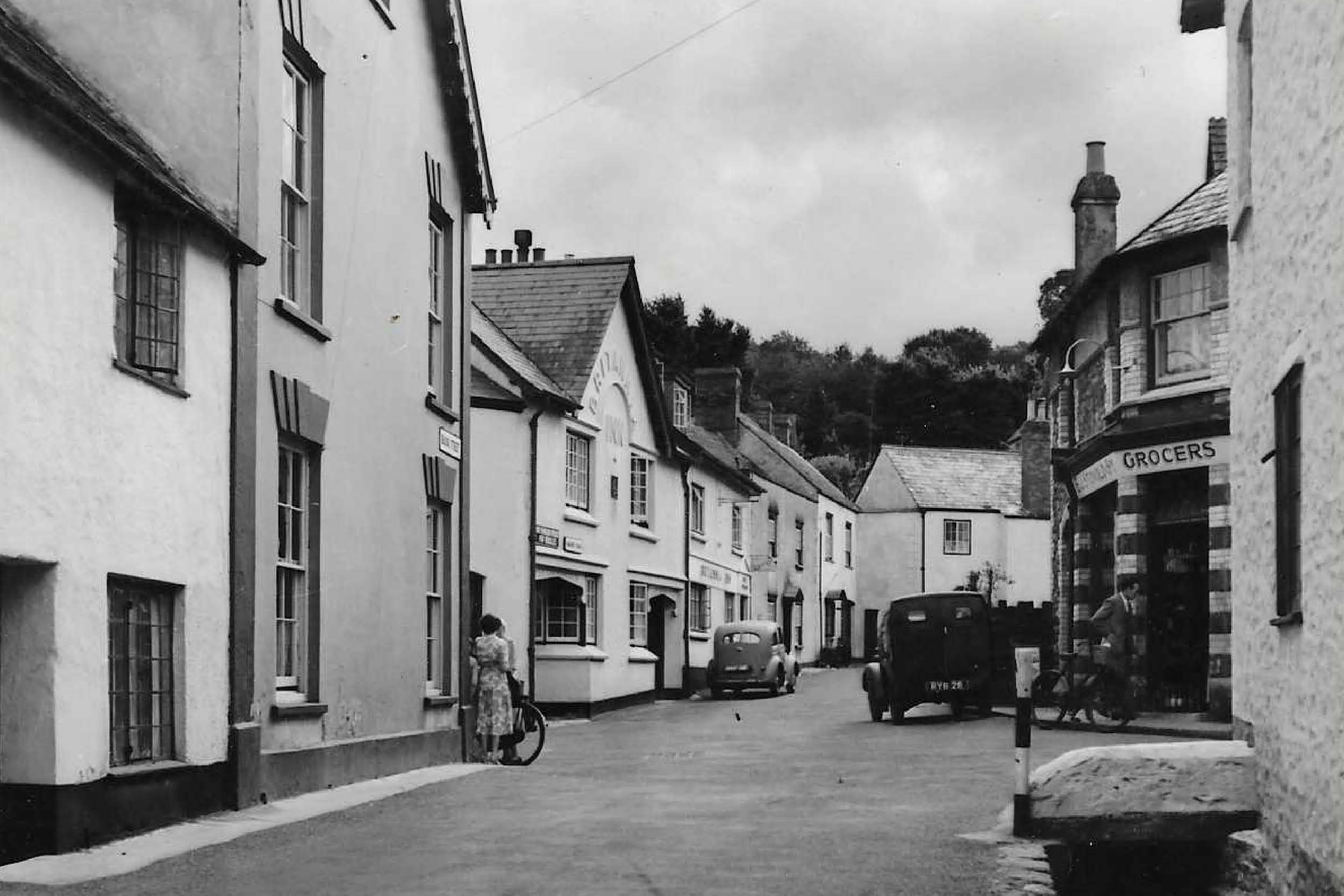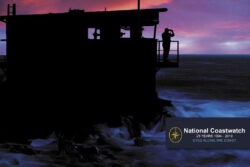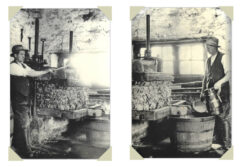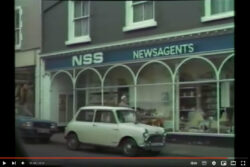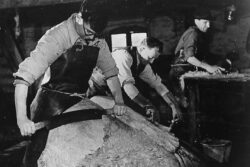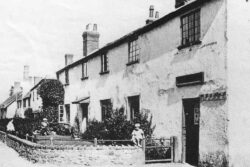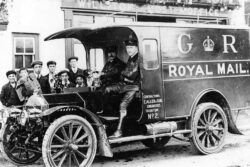The second part of the Alcombe walk concentrates on Manor Road. The Kingsley Taylor photo looking up it is remarkably similar to how it still looks today *.
Opposite the Britannia was Mr Stovell’s grocery shop with a tanyard on one side. We know the tanyard was in existence in 1817 but had gone by 1851 when it is no longer recorded on the census.
Alcombe Cote ( formerly Castle Villa) on the left of Manor Rd, built in the shape of a cross, was the home of Edwin Palmer who rented nine quarries from the Luttrells from which sandstone was quarried. He recruited men from South Wales and Cornwall as workers.
Next door is a hidden gem called Grove Place , approached through an archway with a flight of stairs beyond. This was built in stages by Palmer for his workers. Firstly three one bed cottages 7, 8 & 9 were built in 1861 of local stone in the NE of the site. Next came the chapel which was at first independent but by 1892 was rented by the Anglican Church as a chapel of ease where regular services were held until St Michael’s was built.
Palmer being an architectural enthusiast had a lychgate build so that he could walk from his property through to the chapel. Finally six two bed sandstone cottages were built at right angles Originally there were no porches on the cottages which all had slate roofs and small gardens.The chapel ,which was used as a second hand clothes shop during the war, is now the home of the Spiritualists. As you,leave notice the lion fountain on the wall on the far side of the stream obviously never intended to be used there!
Opposite Grove Place is Stanley Cottage, one of four 17C cottages called Cefn Court. Mainly thatch and cob. Stanley Cottage dated 1615 has a wealth of original details such as character features around the fireplace and plaster moulding on the ceilings. To the side of it once stood a lime kiln. The parents of the owner,until very recently of 1, Grove Place lived there. These are a fascinating group of cottages and each had a section of garden in a large area of land behind.
Look at the unusual War Memorial on the right which was listed on October 27th 2015. It was erected in the early 1920’s as a WW1 memorial. It is very a carefully designed Pentaptych (having five hinged panels) which is of historic importance as a poignant reminder of the tragic impact of world events on a small community. It takes the form of a shelter or shrine roof carried on four stone columns. It was originally enclosed by a timber trellis fence with a gate.This was replaced with a rubble stone wall and an iron gate in the late 20C. There is painted lettering saying-
‘For God,King and Country.’ See a stone slab which reads,
‘Never Forget. That these lives. Were willingly given. That you might be free.’
On a stone planter to the side of the memorial is a metal plaque on which are the words.
‘In loving memory of J.Locker & comrades who fell at Arras April 26th 1917 RIP.
The owner of Dunster Lodge Col.Blofeld paid for this memorial in memory of his only son D’arcy who died at Ypres in 1915 aged 25 yrs.
Where there is a bridge on the right is the mill pond in which watercress used to grow. At one time the pond was used for sheep dipping. There was once a mill near here. On the far side of the bridge is the C16 Staunton Cottage. Staunton meaning Stoney place. To its right in amongst the trees is a former lime kiln.
There were extensive quarries in Alcombe accompanied by lime kilns but part of the area marked for the purpose of quarrying was by 1904 being used for housing. In 1707 a licence was granted enabling a search for copper, tin, lead and coal. It is said that in Elizabeth 1’s reign there had been previous searches. This time 5 men were allowed to sink exploratory shafts, exactly where is unknown but all came to nought.
The building facing Staunton Cottage across the green area once housed a Hackney carriage business with stables for the horses and a yard. The owners were called Greenslade.
Take the path left of the cottage leading up amongst the trees and see the 300 year old Middle Staunton Cottages. Number 1 still has the original front door and an original window. It was always two cottages each with a later extension on the end to provide a kitchen and bathroom.
Walk up to the end and view Dunster Lodge high up on the far side of the road which according to the 1881 census was the home of Attorney William Theodore Pitt Watkins and his five children. He died in 1897. As a private dwelling it had a lodge house, now called Hillgarth, a Coach house, now converted, stables and even its own reservoir called Toad’s Park.
This is still in existence and the pipes are still in situ but it no longer supplies the house with water. It became the home of Colonel & Mrs Blofeld in 1911.
Their son D’arcy, a noted horseman, bred polo ponies and hunters – the stables are opposite the house across the road.
The church choir used to go carol singing at the Lodge where they had hot punch, coffee and cocoa before heading up to Aldersmead. The Colonel held the Manor of Alcombe until 1934 when he sold it to Mr Mc Arthur of Combe House, who in turn disposed of it in 1952 to the Urban District Council.
Dunster Lodge said to be haunted, is now a Residential Care Home. When a fireplace was taken out recently an old decorated fireplate was found behind it.
The earliest fireplates were French dating back to 1460. They acted as a kind of radiator. Wood fires generated little heat so an iron fire plate which absorbed heat would provide 50% more heat. The thicker the better and often decorated with scenes from mythology.
Continue up to Aldersmead a beautiful Arts & Crafts house built in 1910 as a country cottage for the Earl of Cromer. Lord and Lady Cromer came in the Summer and Lady Cromer laid out the gardens complete with pond in 1924 and various trees including Acers.
Further up the combe is Minehead Youth Hostel another building with an interesting exterior once owned by a Mrs Hayes. Beyond it is Alcombe Common. These articles have only touched upon some of Old Alcombe’s fascinating buildings.
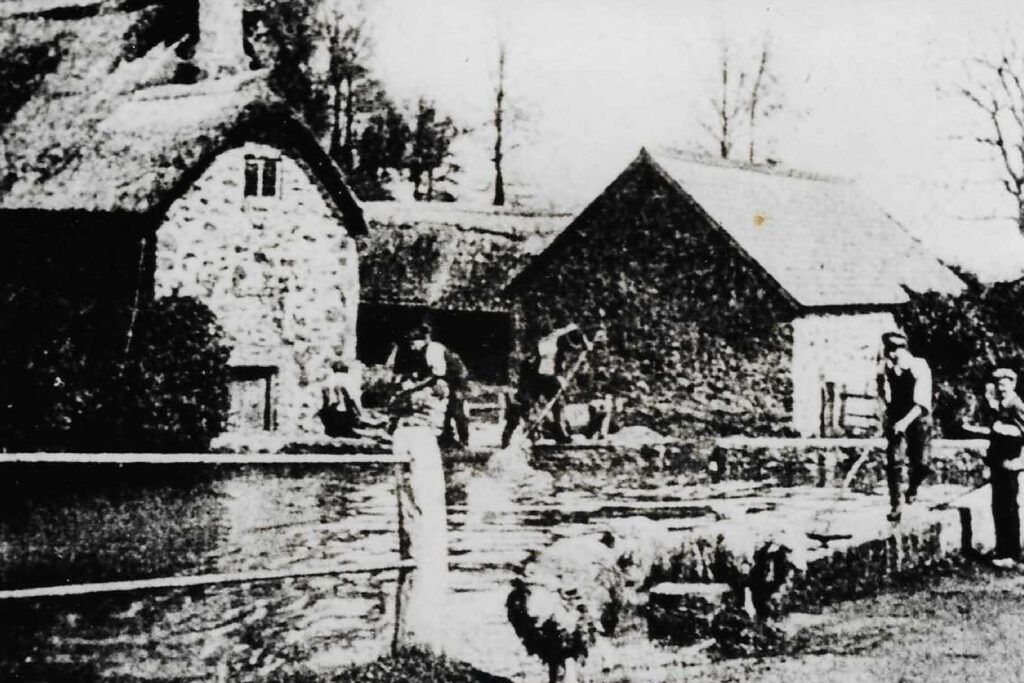
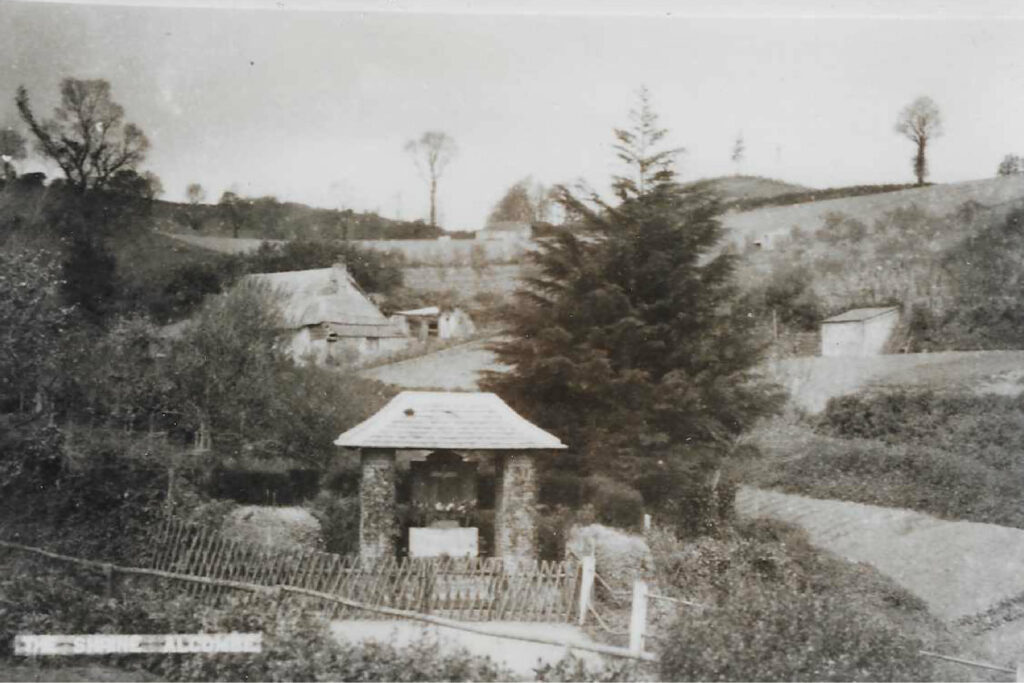
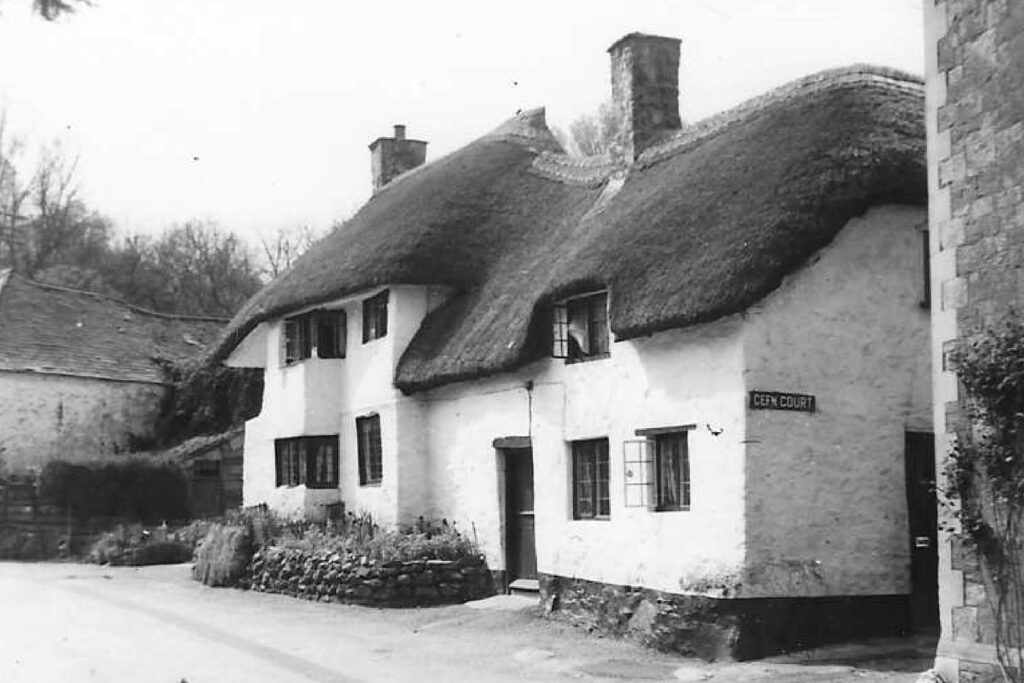
Compiled by Sally Bainbridge on behalf of Minehead Conservation Society.
Buy the book! Minehead & Beyond
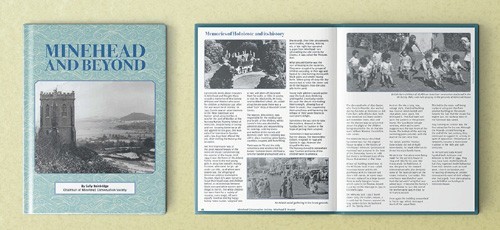
This book is a compilation of articles written for this magazine by Sally Bainbridge on behalf of Minehead Conservation Society. It contains information about the richness of West Somerset’s history; culture; people; heritage; traditions and beautiful and varied landscape. The book costs just £5 and all profits go to Minehead Conservation Society.
Available to buy from AR Computing, Park Lane Home Furnishing (in their Park Lane shop), Minehead Tourist Information Centre and Townsend House (Monday am).
Office: Townsend House, Townsend Road, Minehead TA24 5RG (01643 706258) E-mail: [email protected]
